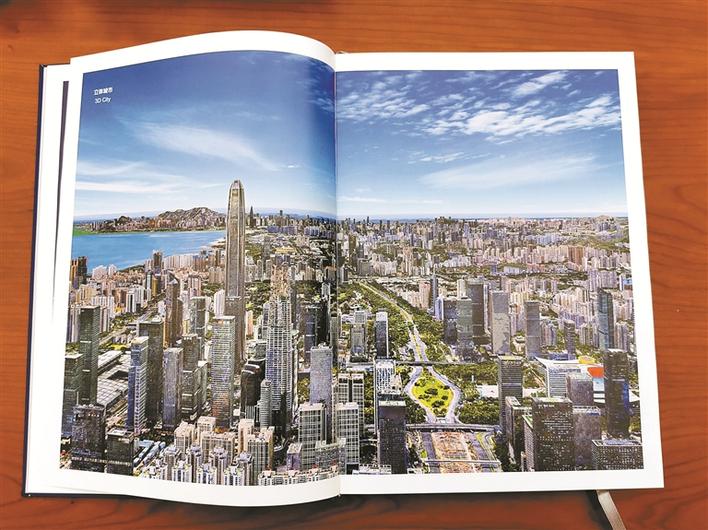New edition of SZ atlas published
Writer: Han Ximin | Editor: Holly Wang | From: Shenzhen Daily | Updated: 2020-08-21

A page of Shenzhen’s landscape in the atlas that was drawn by the technology of oblique photography MESH model. Xu Ya
An updated edition of Shenzhen maps, “2020 Atlas of Shenzhen,” was released Wednesday ahead of the 40th anniversary of the Shenzhen Special Economic Zone.
The atlas, a comprehensive collection of maps of Shenzhen, illustrates the city’s achievements over 40 years from economic, ecological, social, environmental, cultural and geographic perspectives, a news conference of Shenzhen Municipal Planning and Natural Resources Bureau said Wednesday.
In the chapters, each with a different theme, the atlas introduces the history and achievements of Shenzhen in social, economic, cultural, natural and management sectors.
In the section of urban areas, the maps introduce the status and geographical situation of urban blocks and areas of special interest.
The compilation of the atlas was headed by Wang Jiaoyao and Guo Renzhong, academicians of the Chinese Academy of Engineering. It covers not only traditional geographic data, but also vast amounts of data relating to the ecological environment, scientific innovation, education, medical care, elderly care, housing, public facilities, greenways and parks.
Some “dark technologies” in mapping, such as night light remote sensing imaging and oblique photography MESH model, have been applied. Shenzhen is the first Chinese city that has realized production of a citywide real-time 3-D model. It presents the city’s skylines and skyscrapers from Futian CBD towards Nanshan District. It allows people to immerse themselves into Shenzhen’s spatial environment and experience the urban glamour personally. It provides a strong visual impact to viewers by presenting the urban areas and their construction from a 45-degree angle.
Nan Zhaoxu, a scholar in nature and the history of Shenzhen, was the first citizen to receive the atlas. “I am glad that my suggestions on environment protection was taken into consideration. It is the first atlas in China that adopted environment-friendly materials and techniques that reduce pollution and save energy,” said Nan.